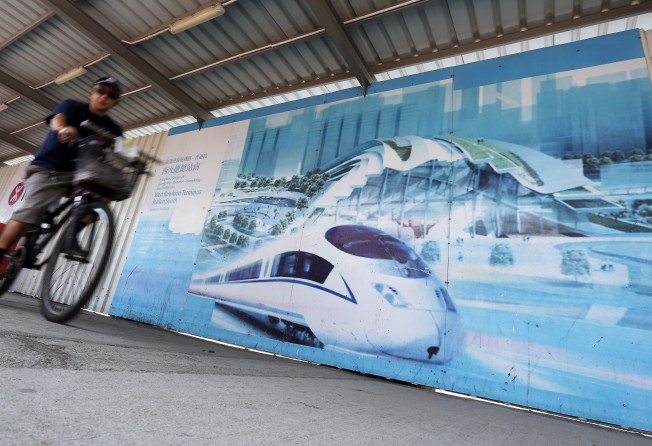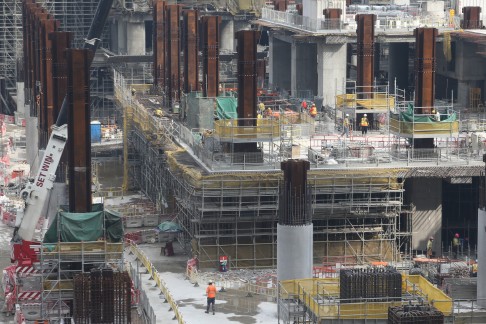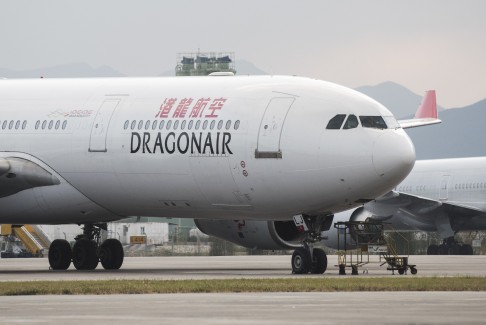MTR's costly high-speed rail exemplifies what goes wrong when politics - not commercial logic - guides investment
Philip Bowring says the MTR's government-appointed board has clearly lost touch with market principles in its handling of the costly and much-delayed high-speed rail project

The MTR Corporation is a microcosm of Hong Kong, close to both its best and worst. First, the best. Railway operations have glitches and stupidities, whether they are about signals, dogs or nanny-state nonsense such as not walking on escalators. But the system works well, despite being overloaded, and is well maintained. Trains run on time and information is always easily available. The company, from its early days, has earned a reputation that has won it contracts to operate railways in several locations.
It is not especially cheap by Hong Kong public transport standards, but people do not see it as a rip-off benefiting well-connected people. They think of it as theirs. Foreigners admire it.
But if it is so well run as a railway, how come its recent new-line investments have been so late and so overbudget that taxpayers are now expected to pay out some HK$19 billion more, or a total of HK$84 billion for a much delayed high-speed rail link of just 26km between Kowloon and the border?
There is one very simple answer to this: look at the composition of the board of a company which is both Hong Kong's largest publicly owned corporate enterprise but is also listed on the stock exchange.
It has 20 board members - an unwieldy number. Of these, just one is an executive. The rest are four government officials who are non-executives and 15 so-called independent non-executives, local worthies who have lots of other jobs and interests. Fifteen of the total are aged 60 or over. To put it simply, a bunch of officials and superannuated worthies lord it over the professionals who do the work.

The government-appointed board has lost touch with reality, let alone market principles. In return for the HK$19 billion, the MTR Corp is supposed to pay a special dividend - back not only to the government as 76 per cent shareholder but to the 24 per cent of public shareholders. Why? It is a proposal that runs so contrary to both risk/reward and good governance practices that it deserves reference to the auditor general. Why should taxpayers subsidise shareholders as well as underwrite a project from which few will benefit? Will the users pay?
It is not difficult to see why an executive of professionals made such a series of errors in estimates of the time and cost of the railway. They were under the gun of their own board, officials and the nodding-head independent non-executive directors to do what the government wanted: come up with an overoptimistic timetable and cost. The government wanted to please Beijing by linking to the mainland system, wanted to appease commercial interests by putting its terminus in the heart of Kowloon rather than at a New Territories junction with other transport, and to present a cost estimate that would not be too terrifying for a sceptical public.
Executives have not forgotten how the chief executive of the Kowloon-Canton Railway Corporation, KY Yeung, was forced out in 2003 by a politically well-connected non-executive chairman, Michael Tien Puk-sun.
The partial privatisation of the MTR Corp was always a nonsense as its profits are determined more by the government's land pricing than its transport role. It is legitimate to partly finance a railway from the enhanced land values the railway brings. But if it is to be a listed company, it needs to operate according to clear rules, and normal corporate parameters.

Abuse of public funds has become the norm for officials who use wasteful mega projects as an excuse to squeeze spending in other areas, meanwhile feeling secure that they can raid the fiscal reserves if necessary.
The airport is a similar case. It was supposed to have been fully corporatised but sits in a no-man's land of being a government-controlled authority. This enables it to serve vested interests at taxpayers' expense rather than act as a commercial enterprise. Like most major ports and airports, it should rely on private investment for a new runway. But with a board of non-executive notables and a chief executive whose previous career was with another quasi-government outfit, the Trade Development Council, it is assumed that taxpayers will pick up most of the bill for what is supposed to be an investment in traffic growth.
Airport congestion has been exacerbated already by the politically driven, anti-commercial incentives for links to multiple mainland cities.
Those vested interests banging the drum for a publicly funded third runway are also much the same as those lauding the benefits of the (train-less) HK$117 billion bridge to Macau and Zhuhai as integrating Hong Kong with the western Pearl River Delta. Surely, integration should mean easy access between Hong Kong and the underused Zhuhai and Macau airports. Setting up an in-transit system to allow international passengers to use nearby mainland airports without immigration hassles should not be difficult or expensive.
It is absurd that no such system exists now in Macau, where passengers from Hong Kong using its airport have to go through immigration twice between the Cotai ferry terminal and the airport terminal 100 metres away. Please let investment be guided by commercial logic and common sense.
Philip Bowring is a Hong Kong-based journalist and commentator